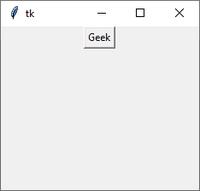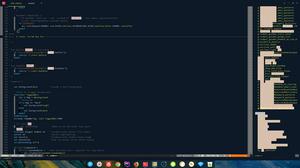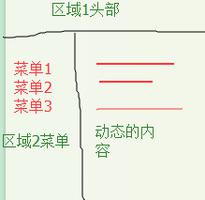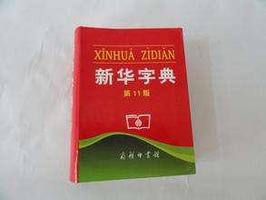【JS】JS中的this到底是什么?
JS中的this到底是什么?
Littleor发布于 今天 13:51

JS中的this到底是什么
可能你在Vue中见过无数这样类似const that = this;的表达式
const that = this;
const obj = {
message: "I'm obj.",
printThis: function(){
console.log(this);
},
printThat: function(){
console.log(that);
},
};
obj.printThis();
obj.printThat();
这里为什么一定要使用const that = this;呢才能拿到正确的this呢?
是这样的,对于函数(也就是个对象)中的this,指向的是调用该函数的对象的。
举个🌰
function printThis(){
console.log(this);
}
const obj = {
message: "I'm obj.",
printThis: printThis
}
printThis(); // 等同于 this.printThis(); 都是在window这个上下文下调用 this指向的是调用函数的对象: window
obj.printThis(); // 这个printThis是在obj的上下文下调用 this指向的是调用函数的对象: obj
所以可以做个小总结: this总是指向调用本函数(对象)的对象。
而在在构造函数内的this是指向哪里的呢?指向的也是调用构造函数的对象吗?
构造函数会在对象被实例化的时候被调用,会调用call()这个方法来指向该对象,故this指向的是对象本身。具体细节可自行查阅new一个对象的时候做了些什么。
所以就可以回到开始的问题了,为什么要用const that = this;呢?
const that = this;
const obj = {
message: "I'm obj.",
printThis: function(){
console.log(this);
},
printThat: function(){
console.log(that);
},
};
obj.printThis();
obj.printThat();
其实也就是为了将外部的this保存到that,然后在函数中调用外部的this。
一句话:this就是调用本函数(对象)的对象。
JS中如何优雅的使用this
综合上述,想必应该大概了解了this是什么了。使用const that = this;这种语句肯定不优雅,那么在项目中如何优雅的来使用this呢?
箭头函数
首先可以通过箭头函数来直接使用this,因为箭头函数是不会绑定指针域的,也就是说箭头函数内的this和箭头函数外层的this是一样的。
console.log(this); // 1 这里指向window
const obj = {
message: "I'm obj.",
printThis: function(){
console.log(this);
},
printThisWithArrowFunction: () => { console.log(this); }
}
obj.printThis(); // 2 这里指向 obj
obj.printThisWithArrowFunction(); // 3 这里和1一样指向window
所以可以通过箭头函数来很愉快的解决this指向不同问题。
手动改变函数的this
JS中函数提供了三个方法来手动设定this的指向:call()、apply()和bind()。
通过调用这三个方法来间接调用函数就可以直接指定this,那为什么就指定this需要三个方法呢?
| 方法 | 参数 | 返回值 | 说明
| call() | this, param1, param2, ... | undefined | 传入this指向和参数即可调用
| apply() | this,[param1, param2, ...] | undefined | 传入this指向和数组形参数即可调用
| bind() | this, param1, param2, ... | Function | 传入this指向和参数返回对应指向的函数
很容易可以发现,三个函数的作用几乎是一样的,但是用法上稍有不同,举个🌰:
function printThis(a, b){
console.log(this, a, b);
}
const obj = {
message: "I'm obj."
}
[printThis.call](http://printthis.call/)(obj, 1, 2);
printThis.apply(obj, [1, 2]); // 数组形式
printThis.bind(obj, 1, 2)(); // 注意返回的是函数,还需要调用下返回值
更多
想必到现在应该对如何合理使用this大概理解了吧?那么有什么用处呢?
这里拿大家都知道的数组裁剪举个🌰:
const arr = [1, 2, 3];
arr.slice(1); // 去除第一个 这里的slice内部的 this 就指向的是arr!
console.log(arr); // [2, 3]
// 那么如何利用这个特性来将非一般数组类型切割呢?
const obj = {
0: 1,
1: 2,
2: 3,
length: 3 // 一定要有length属性
};
// 直接调用 obj.slice(1); 是不可以的因为对象的prototype没有这个方法
// 可以通过人为改变slice的this指针来实现
console.log([Array.prototype.slice.call](http://array.prototype.slice.call/)(obj)); // 使用call方法将this指向了obj即可
javascript前端node.js
阅读 24发布于 今天 13:51
本作品系原创,采用《署名-非商业性使用-禁止演绎 4.0 国际》许可协议
Littleor
1 声望
0 粉丝
Littleor
1 声望
0 粉丝
宣传栏
目录

JS中的this到底是什么
可能你在Vue中见过无数这样类似const that = this;的表达式
const that = this;
const obj = {
message: "I'm obj.",
printThis: function(){
console.log(this);
},
printThat: function(){
console.log(that);
},
};
obj.printThis();
obj.printThat();
这里为什么一定要使用const that = this;呢才能拿到正确的this呢?
是这样的,对于函数(也就是个对象)中的this,指向的是调用该函数的对象的。
举个🌰
function printThis(){
console.log(this);
}
const obj = {
message: "I'm obj.",
printThis: printThis
}
printThis(); // 等同于 this.printThis(); 都是在window这个上下文下调用 this指向的是调用函数的对象: window
obj.printThis(); // 这个printThis是在obj的上下文下调用 this指向的是调用函数的对象: obj
所以可以做个小总结: this总是指向调用本函数(对象)的对象。
而在在构造函数内的this是指向哪里的呢?指向的也是调用构造函数的对象吗?
构造函数会在对象被实例化的时候被调用,会调用call()这个方法来指向该对象,故this指向的是对象本身。具体细节可自行查阅new一个对象的时候做了些什么。
所以就可以回到开始的问题了,为什么要用const that = this;呢?
const that = this;
const obj = {
message: "I'm obj.",
printThis: function(){
console.log(this);
},
printThat: function(){
console.log(that);
},
};
obj.printThis();
obj.printThat();
其实也就是为了将外部的this保存到that,然后在函数中调用外部的this。
一句话:this就是调用本函数(对象)的对象。
JS中如何优雅的使用this
综合上述,想必应该大概了解了this是什么了。使用const that = this;这种语句肯定不优雅,那么在项目中如何优雅的来使用this呢?
箭头函数
首先可以通过箭头函数来直接使用this,因为箭头函数是不会绑定指针域的,也就是说箭头函数内的this和箭头函数外层的this是一样的。
console.log(this); // 1 这里指向window
const obj = {
message: "I'm obj.",
printThis: function(){
console.log(this);
},
printThisWithArrowFunction: () => { console.log(this); }
}
obj.printThis(); // 2 这里指向 obj
obj.printThisWithArrowFunction(); // 3 这里和1一样指向window
所以可以通过箭头函数来很愉快的解决this指向不同问题。
手动改变函数的this
JS中函数提供了三个方法来手动设定this的指向:call()、apply()和bind()。
通过调用这三个方法来间接调用函数就可以直接指定this,那为什么就指定this需要三个方法呢?
| 方法 | 参数 | 返回值 | 说明
| call() | this, param1, param2, ... | undefined | 传入this指向和参数即可调用
| apply() | this,[param1, param2, ...] | undefined | 传入this指向和数组形参数即可调用
| bind() | this, param1, param2, ... | Function | 传入this指向和参数返回对应指向的函数
很容易可以发现,三个函数的作用几乎是一样的,但是用法上稍有不同,举个🌰:
function printThis(a, b){
console.log(this, a, b);
}
const obj = {
message: "I'm obj."
}
[printThis.call](http://printthis.call/)(obj, 1, 2);
printThis.apply(obj, [1, 2]); // 数组形式
printThis.bind(obj, 1, 2)(); // 注意返回的是函数,还需要调用下返回值
更多
想必到现在应该对如何合理使用this大概理解了吧?那么有什么用处呢?
这里拿大家都知道的数组裁剪举个🌰:
const arr = [1, 2, 3];
arr.slice(1); // 去除第一个 这里的slice内部的 this 就指向的是arr!
console.log(arr); // [2, 3]
// 那么如何利用这个特性来将非一般数组类型切割呢?
const obj = {
0: 1,
1: 2,
2: 3,
length: 3 // 一定要有length属性
};
// 直接调用 obj.slice(1); 是不可以的因为对象的prototype没有这个方法
// 可以通过人为改变slice的this指针来实现
console.log([Array.prototype.slice.call](http://array.prototype.slice.call/)(obj)); // 使用call方法将this指向了obj即可
以上是 【JS】JS中的this到底是什么? 的全部内容, 来源链接: utcz.com/a/114465.html









得票时间